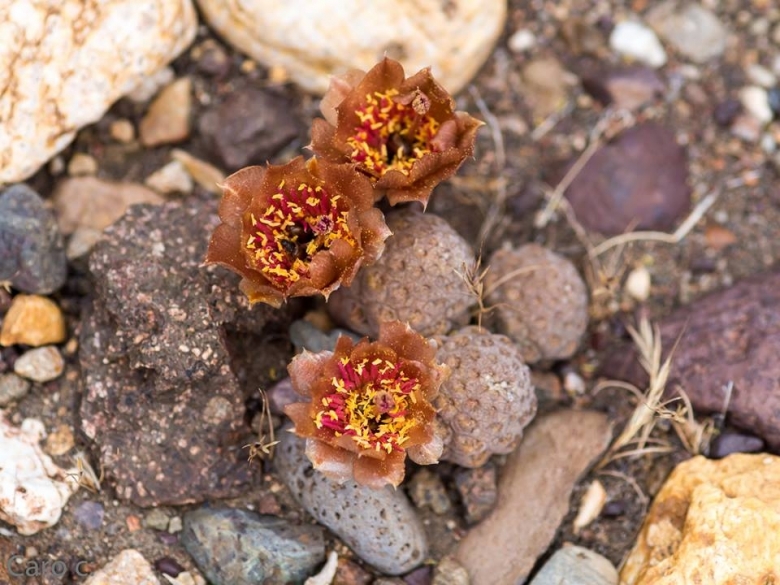
Pterocactus neuquensis Photo by: Carolina González
Origin and Habitat: Neuquén (Argentina South, Southern South America, Southern America)
Type Locality: 19.5 km W from Zapala towards Primeros Pinos, 1130 m
Synonyms:
Description: Pterocactus neuquensisSN|33269]]SN|33269]] is a small cactus with rather conical stem-segments, rarely spherical. Often the spines are almost invisible and tiny, occasionally these are longer including one pointing downward. The flowers almost always develop laterally on the stems, they are reddish-purple or brownish red (rarely lighter). Ovary deeply inserted in the pericarpel, inversely piriform.
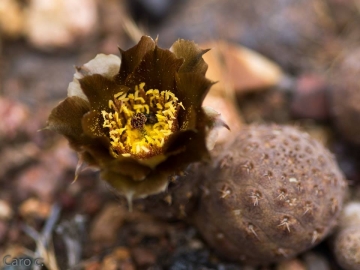 Pterocactus neuquensis Photo by: Carolina González
Pterocactus neuquensis Photo by: Carolina González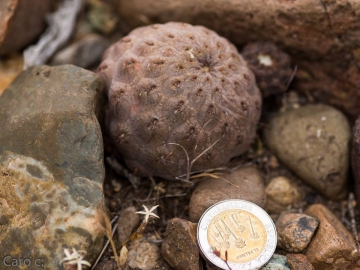 Pterocactus neuquensis Photo by: Carolina González
Pterocactus neuquensis Photo by: Carolina González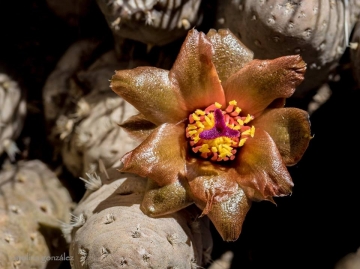 Pterocactus neuquensis Photo by: Carolina González
Pterocactus neuquensis Photo by: Carolina González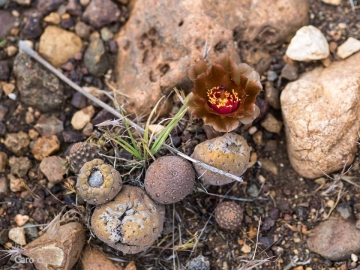 Pterocactus neuquensis Photo by: Carolina González
Pterocactus neuquensis Photo by: Carolina González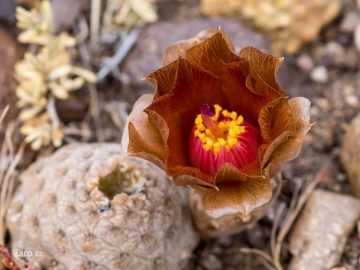 Pterocactus neuquensis Photo by: Carolina González
Pterocactus neuquensis Photo by: Carolina González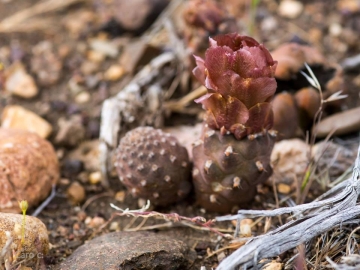 Pterocactus neuquensis Photo by: Carolina González
Pterocactus neuquensis Photo by: Carolina González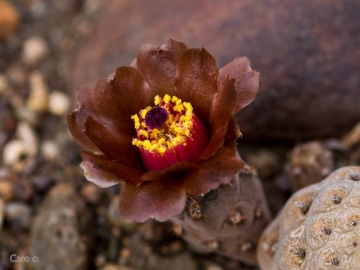 Pterocactus neuquensis Photo by: Carolina González
Pterocactus neuquensis Photo by: Carolina González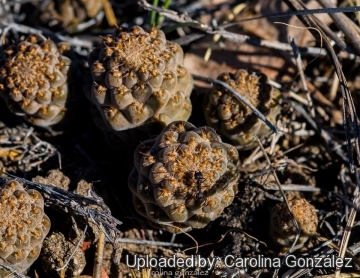 Pterocactus neuquensis Photo by: Carolina González
Pterocactus neuquensis Photo by: Carolina GonzálezCultivation and Propagation: Pterocactus neuquensisSN|33269]]SN|33269]] is easy to grow, provided it is kept cool, but dry during autumn and winter. It is a particular favourite of caudiciform plant enthusiasts.
Growth rate: Plants grow very slowly and caudex take many years to enlarge. Clustering in cultivation, if grown correctly, it will reward the grower with generous displays of flowers.
Caudex exposure: The remarkable tuberous rootstock (caudex) is often raised above the soil line so that this can be seen and more readily appreciated. For best results the tuber must be exposed only when plans become mature enough, usually after several years of underground growth, as the exposed caudex will no longer increase in size once it has been lifted above the soil line.
Potting medium: Use a cactus mix or add extra perlite or pumice to regular soil potting soil. A gritty, very free-draining compost is suitable, and clay pots help the plants to dry out between watering. For best results, use a deep pot.
Fertilization: Need a perfect fertilizer diet in summer. Use preferably a cacti and succulents fertilizer with high potassium content including all micro nutrients and trace elements or slow release fertilizer.
Watering Needs: Water normally in the growing season from March to October. No water should ever be allowed to stand around the roots. Keep almost completely dry in winter. The swollen caudex makes it very tolerant of under watering.
Hardiness: It is quite frost resistant if kept dry, hardy as low as -15° C. It can be grown outdoors in the summer months to benefit from direct exposure to light, and especially exposure to high summer temperatures. Recommended Temperature Zone: USDA 9-10.
Sun Exposure: It is essential to give full sun; otherwise they will become atypical. If grown in full sun, the new growth will flower profusely in spring and summer.
Rot: Rot it is only a minor problem with pterocacti if the plants are watered and “aired” correctly. If they are not, fungicides won't help all that much. The plant turns immediately to mush when over watered, or watered out of season. Care must be given in watering, keeping them warm and wet while growing, and cooler and dry when dormant.
Maintenance: Most of the slender stems become detached during winter, but some advise to help the plant by pruning all the top growth in autumn, to encourage it to produce stems with terminal flowers in the spring.
Reproduction: Seeds or cuttings. The seed should be planted in spring. Germination usually occurs within about one week to one month. Seed germinate at 15-21 °C.


















